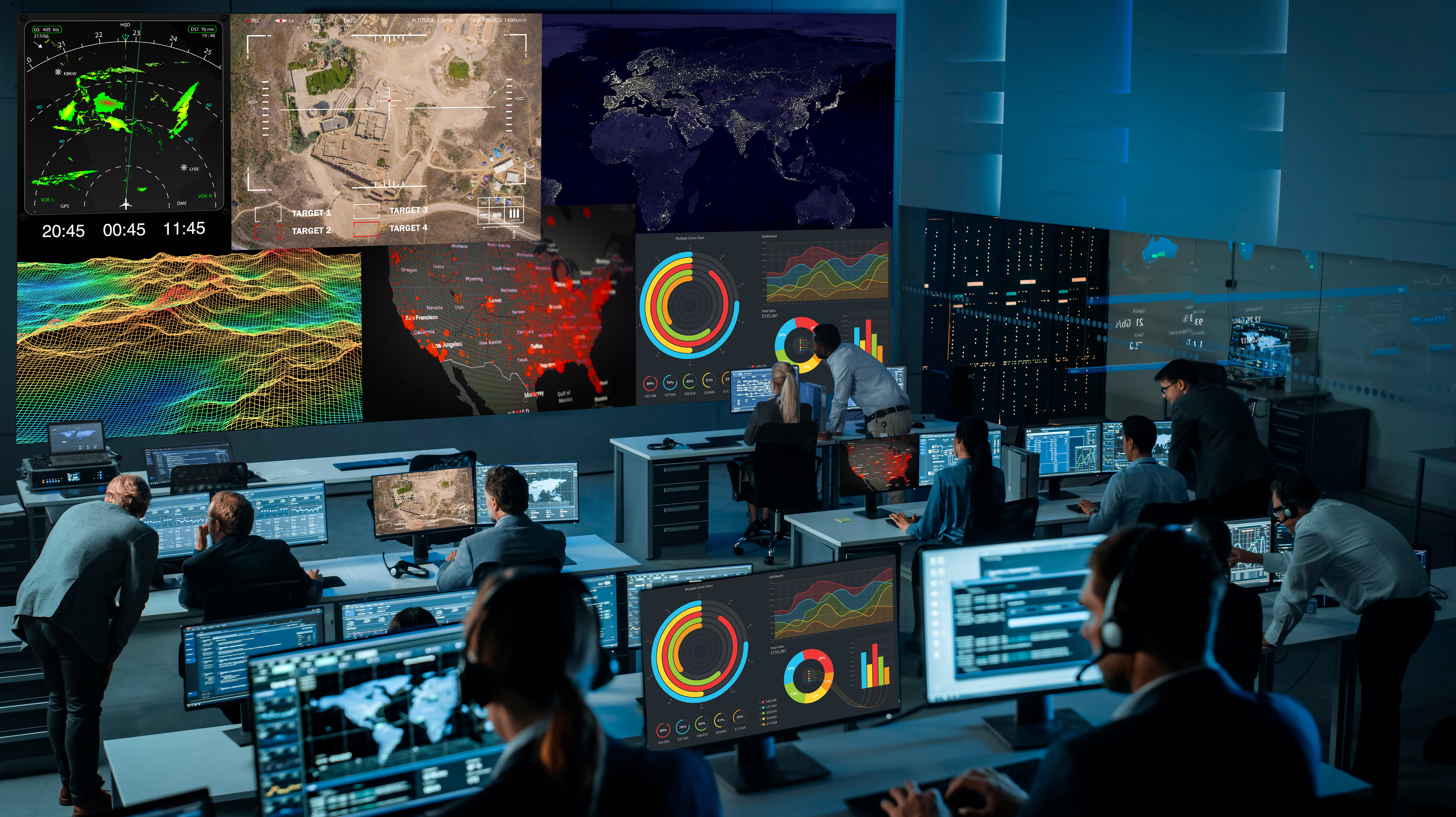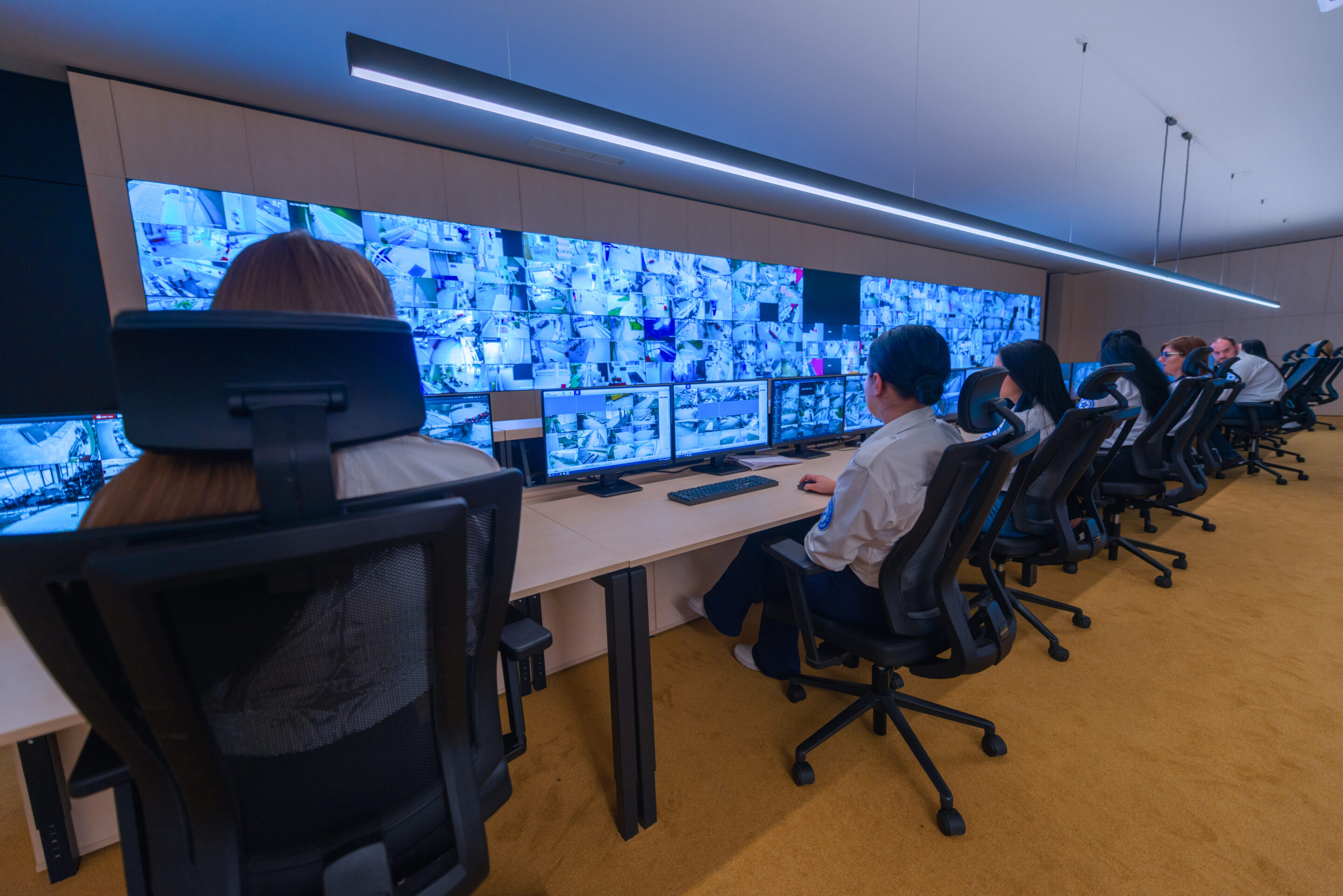Centros de vigilância de segurança

As salas de segurança e vigilância podem ser o centro da comunicação centralizada de centenas de feeds de vídeo. Não só esses feeds têm de ser seguros com as capacidades da parede para apresentar um número quase infinito deles, como a gestão de acesso é também um elemento-chave nesses cenários.
Podemos fornecer soluções para :
Security Operation Centers (SOC)
Gestão e vigilância do tráfego
Salas de descanso de segurança
Security Operation Centers (SOC)
The ideal video processor for a Security Operation Center (SOC) must possess several critical assets to ensure robust performance and seamless integration. High processing power is essential to handle multiple high-definition IP camera streams simultaneously, ensuring real-time monitoring without lag or frame drops. Scalability is crucial, allowing the system to expand as the number of cameras or data sources increases. Compatibility with open APIs enables integration with various Video Management Systems (VMS) for a unified operational view, incorporating surveillance and analytics. Advanced collaboration and annotation features are vital for enabling SOC analysts to share, annotate, and analyze video feeds efficiently, fostering teamwork and rapid decision-making. Additionally, reliability and 24/7 operational capability are non-negotiable to minimize downtime and ensure continuous threat monitoring. A user-friendly interface and support for multi-screen video walls further enhance situational awareness, allowing operators to manage and visualize data effectively across various displays.
Jupiter Systems’ Catalisador video processor, paired with its Tela collaboration software, stands out as an optimal choice for SOCs due to its alignment with these critical requirements. Catalyst processors are designed with high-performance hardware capable of managing numerous direct IP camera streams, ensuring smooth handling of high-definition video feeds, or from various VMS platforms thru some open APIs. Canvas software enhances this capability with its robust collaboration and annotation features, allowing operators to share live video streams, annotate critical details, and collaborate seamlessly across workstations and video walls, which is essential for rapid threat identification and response.
Canvas is enabling centralized connectivity with surveillance and analytics systems, thus providing a comprehensive operational picture. The Catalyst hardware’s scalability and reliability, engineered for 24/7 operation, make it ideal for expanding SOC needs while maintaining performance, as seen in its ability to drive multi-screen video walls within various VMS interfaces. This combination of powerful hardware and Canvas’s collaborative features positions Catalyst as a leading solution for modern SOCs requiring robust, integrated, and scalable video processing.


Traffic Management Centers
The ideal video processor for a traffic management center must prioritize scalability, reliability, and security to handle the complex demands of real-time traffic monitoring across multiple locations. It should support high-resolution video, such as 4K, to ensure clear visuals from traffic cameras, and offer robust processing capabilities to manage multiple streams simultaneously without latency. A fiber-optic network is essential for long-distance, high-bandwidth data transmission with minimal degradation, enabling seamless integration of camera feeds from various city or country-wide locations. The processor must also provide redundancy for 24/7 operation, ensuring uninterrupted service for mission-critical applications. Additionally, it should feature advanced video processing techniques like de-interlacing and noise reduction for broadcast-quality output, and support secure, scalable network protocols to protect sensitive traffic data. Centralized management software is crucial for controlling multiple video walls and inputs, with compatibility for third-party integrations to enhance functionality.
PixelNet video processing range stands out as the optimal choice for a traffic management center due to its alignment with these critical requirements. Its native support for 4K video and fiber-optic connections via SFP+ ensures high-quality, long-distance transmission of traffic camera streams from multiple locations across a city or even a continent, without signal degradation. PixelNet’s Layer 2 network protocol provides a secure, closed ecosystem that avoids the compression issues of AVoIP systems, maintaining signal integrity and reducing strain on enterprise infrastructure, which is vital for handling sensitive traffic data.
The system’s unlimited scalability, facilitated by stackable switches and a 100GB backbone, allows it to manage thousands of streams and displays across vast geographies, a unique capability for large-scale traffic networks. PixelNet’s StreamCenter decodes multiple IP streams at 1080p or 4K, and its PixelNet Domain Control (PDC) software offers centralized management of nodes and bandwidth, supporting multiple video walls with diverse resolutions. Redundancy is ensured through optional secondary PDC servers for 24/7 reliability, and its self-configuring, self-monitoring design minimizes downtime. Additionally, PixelNet’s compatibility with legacy systems and Tela software enables seamless integration and real-time collaboration, making it ideal for distributed traffic management operations.
